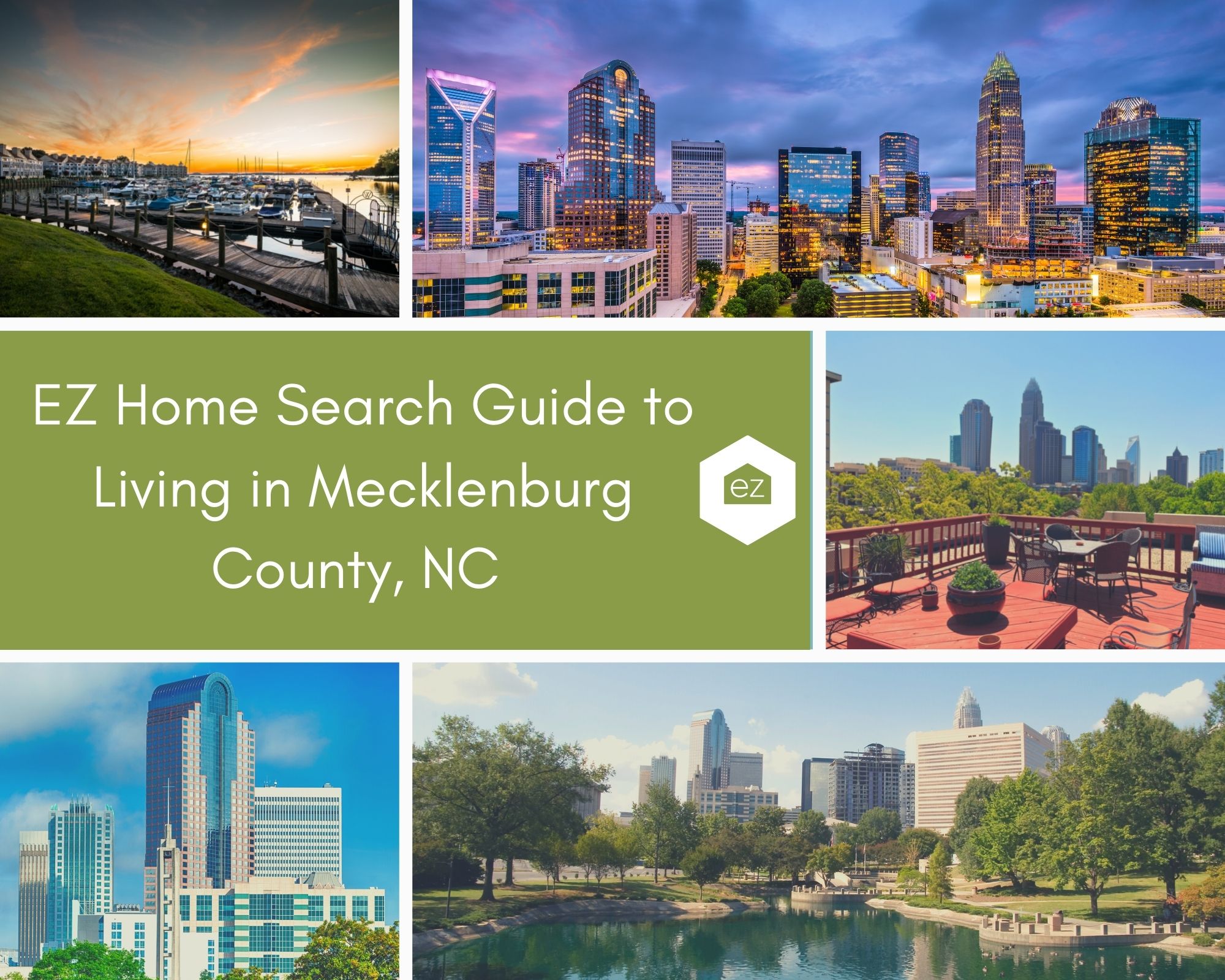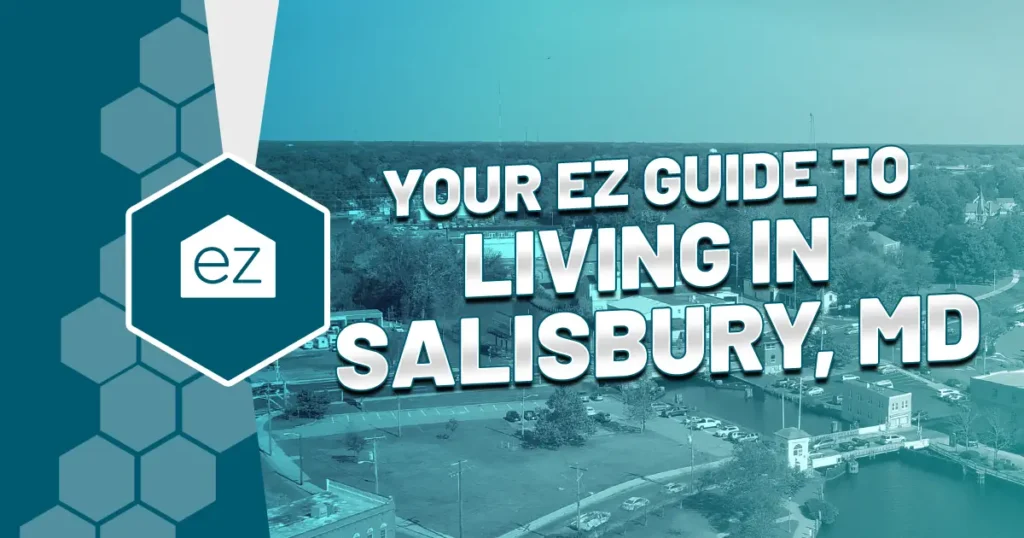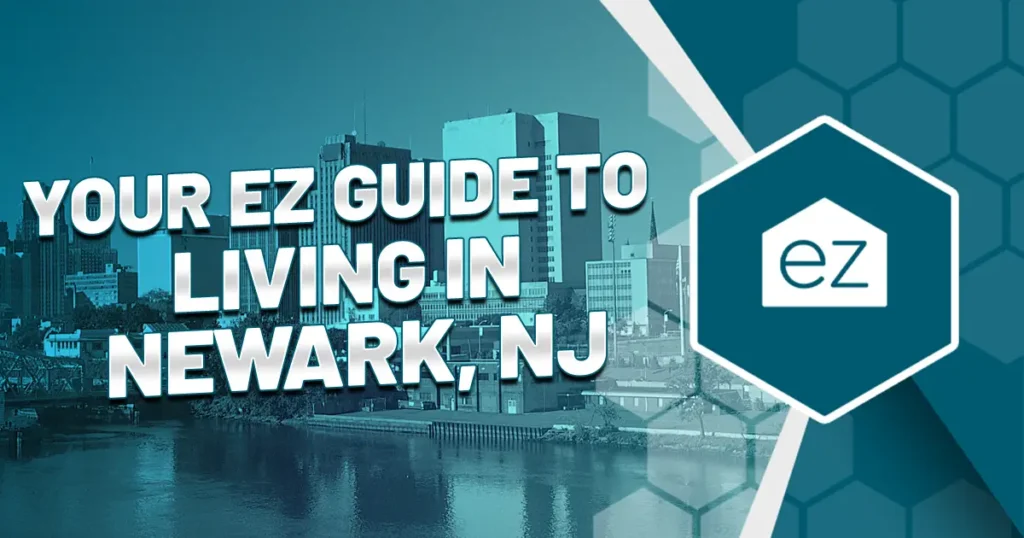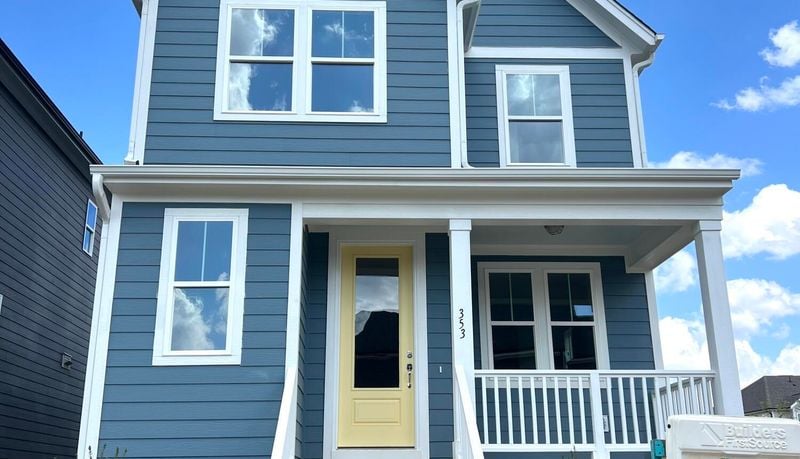EZ Home Search Guide to Living in Mecklenburg County, NC
EZ Home Search Guide to Living in Mecklenburg County, NC
Welcome home to Mecklenburg County, North Carolina, and the largest city in the state, Charlotte. Nicknamed the “Queen City,” residents of all ages enjoy a robust lifestyle full of activities and entertainment. It’s an excellent place for sports enthusiasts, arts and culture, excellent timing, and history. Charlotte often is ranked as one of the “Best Places to Live in the United States” by media sources like US News and World Report and Niche.com.
While Charlotte comprises a large portion of Mecklenburg County, there’s more to living here than the Uptown and big-city living. Explore the Mecklenburg County profile to what living here has to offer its residents.
About Mecklenburg County
Mecklenburg lies in the Piedmont region of North Carolina, sitting on the South Carolina and North Carolina border. Over 1 million people live inside the borders; the region is known across the nation as a hub for major businesses, especially in the financial sector.
With such a large population and a dynamic city like Charlotte, you may think that the cost of living here would be high. Looking at the cost of living index, where a score of 100 represents the national average, Mecklenburg has an overall cost of living of 100.5. This means the overall cost of living here is in line with the national average. All the cost of living categories pretty much scored 100 points, with utilities and transportation being slightly cheaper than housing and miscellaneous expenses. Imagine enjoying big-city amenities, including reasonable housing, without breaking the bank!
The weather isn’t bad either. Residents joke about how the weather can swing wildly, but overall, it has a temperate climate. Expect humid and muggy summers, but the temperatures rarely exceed 95F degrees. Expect sunny skies to suddenly give away to thunderstorms and then a return back to sunny skies. The winters can be chilly and wet, getting down into the 20Fs, but they rarely go under that.
The city of Charlotte has a public transportation system known as the Charlotte Area Transit System or CATS. The system has a light rail line, a free streetcar, and a bus rapid transit line to help move people around the city.
You can also move around quickly with your car. I-77 runs along Mecklenburg’s north-south axis while I-85 moves from the west to the northeast. I-485 rings the entire Charlotte metropolitan area and Mecklenburg County.
Mecklenburg residents also have quick access to the Charlotte Douglas International Airport, which has 35 International flights.
Mecklenburg County History
Mecklenburg County was formed in 1762 from part of Anson County. The county and its seat were named after Queen Charlotte of Mecklenburg-Strelitz, and it is for this reason Charlotte is called the “Queen City.” The actual establishment of the boundaries was a decades-long process of negotiation between North and South Carolina.
The Mecklenburg Declaration of Independence was allegedly signed on May 20th, 1775. There is some debate on whether the document is genuine, but it would be the first colonial region to declare independence from Great Britain. Mecklenburg residents were ardent supporters of the American Revolution. When General Cornwallis invaded Charlotte, he encountered stubborn resistance that made his occupation miserable. Lord Cornwallis called the area a “Hornet’s Nest,” a reference which the locals proudly adopted.
The discovery of gold was a turning point in Mecklenburg County’s history. Hundreds of settlers poured into the area in the early 1800s, all seeking to find their fortune. The first United States Mint Branch opened in Charlotte in 1837. Modern convenience sprung up thanks to two railroads and a telegraph line that ran through the county.
Mecklenburg did not see much combat during the American Civil War, but it was a central part of the Confederacy. The Confederate Naval Ordinance was moved to Charlotte, and it was used to store weapons and munitions.
Many towns were established in the post-Civil War era. Mecklenburg became an important cotton processing center. At one point, it had 17 cotton mills within its borders. Charlotte became a transportation and distribution center because of its railways and road system.
With the start of World War I, Camp Greene was established west of Charlotte. The army training camp attracted recruits from across the country to Mecklenburg County. By 1930, the county’s population had doubled from the turn of the century.
World War II saw Mecklenburg County as a military center again. Morris Field Air Base was built around Charlotte Douglas Municipal Airport as a training center. A Quartermaster Depot opened on Statesville Road while a large Naval Munitions plant operated on York Road.
After the War, Mecklenburg County and Charlotte experienced exceptional growth. The area’s industry and business expanded, bringing more jobs and more people into the community. Lake Norman was also built during this period, becoming a recreational tourism center. During the 1970s, the increased urbanization in the area led voters to propose consolidating the city of Charlotte and Mecklenburg County, although this initiative failed. However, many services have merged in an effort to prevent service duplication.
Mecklenburg County Cities and Areas,
Surrounding Mecklenburg County is Union, Cabarrus, Iredale, Lincoln, and Gaston counties in North Carolina and the South Carolina counties of Lancaster and York. The Catawba River runs along the western border. Lake Norman is a significant feature along the northwestern edge, which connects through the Catawba River to Lake Wylie along the southwest border.
Several cities and towns are in Mecklenburg.
Charlotte is North Carolina’s largest city, and it serves as a financial and banking center in the United States. Various media outlets currently rank Charlotte as one of the best places to live in the country.
Inside the Charlotte metropolitan area are many neighborhoods and communities with unique character and lifestyle opportunities. The locals refer to the downtown area as “Uptown,” as it has the highest elevation point in the area. Essentially, Charlotte grew around this elevation point.
A few Charlotte neighborhoods of note:
University City surrounds the University of North Carolina campus and is home to a diverse food scene and research hub.
Myers Park is often ranked as one of the top neighborhoods in the city. South of downtown, the area is over a century old, with historic mansion-lined streets and ample green spaces.
Dilworth is a historic neighborhood with many homes listed on the National Register of Historic Places. It’s highly walkable and close to the heart of Charlotte.
NoDa is considered the heartbeat of the city’s art scene. It is committed to promoting the arts, small business, and local restaurants.
Ballantyne is a popular and highly ranked community just outside the I-485 belt, with an urban-suburban feel. The affluent area has a shopping center, dining venues, and a public 18-hole golf course.
There are many more neighborhoods to explore if you’re considering moving to Charlotte.
Outside of Charlotte, discover more towns and communities. These include Cornelius, Davidson, Huntersville, Matthews, Mint Hill, Pineville, and part of Stallings.
Cornelius is located close to Lake Norman and offers ample lakeside property choices. It also has a championship golf course, office centers, and a vibrant retail scene.
Davidson is known as one of the most healthy and active cities. It was given a bronze award designating it as a bike-friendly community.
Huntersville is a suburban city 14 miles from Charlotte with waterfront access to Lake Norman. Residents here enjoy nature preserves, golf courses, a nice retail area, and affordable real estate.
Matthews is between Charlotte and Union County. It has a small town filled with lots of annual festivals, family-friendly entertainment, and recreation amenities. The downtown is a vibrant destination with nightlife, restaurants, and retail.
Mint Hill is another suburban town with a small southern feel. Lots of community-based events happen in Mint Hill.
Pineville is near the South Carolina border and 20 minutes from Uptown Charlotte. With a median resident age of 37.5, it’s known for quiet living. The town was also the birthplace of the 11th US President, James K Polk. Pineville is close to the shopping destination Carolina Place Mall.
Mecklenburg County Job Market
Mecklenburg is known as a financial and banking hub along the Eastern seaboard. It’s no surprise the major industries here are banking, manufacturing, and professional services, and the financial sector is one of the largest employers in the Charlotte area.
Ten Fortune 500 companies call Mecklenburg County home. These include the Bank of America, Nuclear Metals, Duke Energy, Sonic Automotive, Brighthouse Financial Insurance, Sealed Air, Coca-Cola Consolidated, JELD-WEN Holding, Albemarle Chemical, and SPX Electronics. In addition to these companies, many banks have a branch or significant operations in the area. These include Wells Fargo, BB&T, First Citizens Bank, Fifth Third Bank, and New Dominion.
Based on the number of employees, the top employers are Bank of America, Wells Fargo, Duke Energy, Atrium Health, Novant Health, Charlotte-Mecklenburg Schools, American Airlines, and Harris Teeter.
The area’s unemployment rate in July 2021 was 4.6%, down from 10.2% in July 2020. The US average unemployment rate was 5.7% in the same month.
According to the Bureau of Labor and Statistics, the leading industries based on the number of people employed inside that industry would be trade and transportation, professional and business services, and government.
Mecklenburg County Real Estate Market
The Queen City has many diverse districts and neighborhoods for you to call home. Here’s a small sampling:
- Uptown: The “downtown” area is a bustling neighborhood for the 9-5 crowd, but residents have lots of nightlife, entertainment, and restaurant options.
- Fourth Ward: Choose from modern apartments or charming Victorian homes in this historic neighborhood.
- NoDa Arts District: Live close to the city’s arts and culture heartbeat
- Dilworth: Known as quiet and laid back, it’s also home to several of Charlotte’s best BBQ joints.
- University City: Popular with college students but also home to many Fortune 500 company campuses.
- Elizabeth: an upscale neighborhood with many amenities and a convenient commute to Uptown.
Based on the July 2021 Mecklenburg County Housing real estate market report, the region is experiencing low inventory. Demand remains high, which is causing average and median home prices to rise. The inventory of available homes was down 44% compared to July 2020. The housing supply stood at 0.8 months.
The median sales price of a Mecklenburg County home was $335,000 in July. Median sales prices have been trending upward since 2015, with more significant gains from 2020 to 2021. At the same time, the days from listing to closing have been trending downward. In July, the days on the market until the sale was 15, a 50% decline.
Specifically in Charlotte real estate, the median sales price was $344,900, a 22% year-over-year increase. New listings were down, and the months’ supply of inventory matched the county figure of 0.8 months.
Looking at some of the county’s Charlotte neighborhoods and towns in July 2021:
- Uptown Charlotte reported a July 2021 median sales price of $345,000, a 22.8% year-over-year increase. Days on the market until sale was 41. Median sales prices are rising again after declines from 2019-2020.
- Davidson had a median sales price of $520,000 and 41 days on the market until sale. The months’ supply of inventory was one month. New listings were down 40%.
- Matthews new listings were down 6% year-over-year. Median sales price was $370,000. The days on market until sale was seven, and the months’ supply of inventory was 0.6.
- Huntersville reported a 24% rise in median sale prices, reaching $433,220. New listings were down 32%, and the months’ supply of inventory was 0.6 months.
Mecklenburg County Demographics
The median age of a Charlotte resident was 34, meaning it has a younger population. However, the whole area is home to many students, young professionals, families, and retirees.
The 2020 US Census counted 1,115,482 residents in Mecklenburg County, an increase of 17.5% over the decade. The residents are highly diverse, with 46% identifying as white alone, 33% reporting as African-American, 13% as Hispanic or Latino, and 6% as Asian alone.
Of the residents aged 25 and higher, 44% reported having a bachelor’s degree or higher for education. This is above the North Carolina percentage of 30% and the United States percentage of 31%. The median income from 2015 to 2019 for a Mecklenburg County resident was $66,641.
Mecklenburg County Education
Charlotte Mecklenburg Schools serve the city of Charlotte and its 146,211 students. As one of the largest school districts in the state and the 22nd largest public school system in the nation, it runs 117 elementary schools, 50 middle schools, and 40 high schools. In terms of test proficiency, it is above the state averages in most of the demographic categories.
Which school residents attend typically is based on their address, but CMS does offer a school choice lottery for its magnet and other specialized educational programs. Several of the schools ranked on US News & World Report’s Best High Schools in America list.
Besides public education, about 78 private schools were available in Charlotte for 2020-2021. Top-ranked schools include Charlotte Christian School, Charlotte Country Day School, and St. Ann Catholic School. Half of the private schools were religiously affiliated, and the schools had an average tuition of $15,537.
The largest institution for higher education in Mecklenburg is the University of North Carolina at Charlotte. It is among the fastest-growing universities in the UNC system and is a large urban research university. The school offers 79 bachelor’s, 66 master’s, and 24 doctoral programs.
Davidson College is a highly selective liberal arts college that offers 31 majors plus the opportunity to create your own through the Center for Interdisciplinary Studies. It also has five pre-professional programs, including pre-law and pre-medicine. The sports teams compete at NCAA Division I.
Queens University of Charlotte offers a personalized small college experience in the middle of a vibrant city. It is a private master’s-level university focused on collaborative learning with 42 majors, 63 minors, and various graduate and certificate programs. Students compete in NCAA Division II athletics.
Central Piedmont Community College is a two-year educational provider. It has six campuses spread around Mecklenburg County and services over 70,000 students a year. The central campus is located in Uptown Charlotte. In total, it has 300 programs of study, which include degrees, university transfer, and certificates.
Johnson & Wales University is a private nonprofit school with accredited undergraduate and graduate degree programs in business, hospitality, culinary arts, technology, and education.
Johnson C Smith University is a private liberal arts university and part of the HBCU tradition. It enrolls 1,600 students a year for 23 degree-seeking programs. The 15 sports teams compete in NCAA Division II. It has been recognized as the number one private HBCU in North Carolina by US News & World Report.
Wake Forest University at Charlotte Center offers the attention of a small, liberal arts college with a leading research institution. The campus offers degrees seeking and non-degree programs, and the MBA program ranked no. 18 nationally.
Mecklenburg County Health Care
Atrium Health runs the largest hospitals in the region. It operates at two locations, the Carolinas Medical Center and Atrium Health Mercy. Atrium Health Carolinas Medical Center is the flagship hospital. They have over 1,000 physicians and providers specializing in all areas of medicine.
The Carolinas Medical Center has the region’s only Level 1 Trauma Center and is an approved transplant center for heart, kidney, pancreas, and liver. They are also one of the five academic medical center teaching hospitals in North Carolina. They provide residency training for 200 physicians in 15 specialties while serving as a UNC-Chapel Hill Medical School satellite.
The Carolinas Medical Center has also received accolades for its Levine Cancer Institute, Carolinas Rehabilitation, and Levine Children’s Hospital.
Another health care option is Novant Health Presbyterian Medical Center. This facility offers emergency services, including pediatric emergency care, a Neonatal Intensive Care Unit, maternity care, and other specialized pathways. Its recognized centers include Stroke and Neurosciences, Rehabilitation, Cancer, Heart and Vascular, and a Woman’s Center.
The Novant Health Charlotte Orthopedic Hospital is the area’s only orthopedic hospital that specializes in a full range of orthopedic services.
Mecklenburg County Things To Do
As a highly urbanized area, expect plenty of lifestyle amenities and things to do in Mecklenburg County. Charlotte has two professional sports teams, the Hornets in the NBA and the Carolina Panthers playing in the NFL. In addition, there are minor league teams for baseball, hockey, and soccer. The Nascar Hall of Fame is in Uptown Charlotte. Just over the county border, the Charlotte Motor Speedway is a location for NASCAR action.
The major sporting venues double as facilities for live shows and top musical artists. Charlotte also has a symphony, professional ballet, and opera.
Inside and around the county await many parks, from the small community pocket parks to acres of recreational opportunities. South of downtown is Freedom Park, a 98-acre green space with trails, tennis courts, sports fields, and a playground. The park hosts events, festivals, summer movie series, and musical performances. Another park, Hornets Nest Park, has a BMX bicycle track, fishing lake, disc golf, sports fields and courts, and more.
Beyond what is in Charlotte, greater Mecklenburg County has plenty of things to do. Lake Norman is the treat for muggy summer days. Just 20 miles north of Charlotte along the northwestern border, residents relax on the beach, spend the day boating, or wander through the various restaurants and shops nearby. The different towns around Lake Norman host regular events like boat parades, races on the lake, music festivals, and the Highland Games.
In short, if there is an activity that you enjoy, it’s likely to be found inside Mecklenburg County. Kid-friendly activities, tennis courts, golf courses, parks, world-class dining, festivals, music, events, and more make life exciting.
Mecklenburg County Local Attractions
The Levine Museum of the New South showcases the good and bad of Charlotte’s history and the Civil War. This interactive museum provides a comprehensive understanding of the Civil War and post-Civil War Society.
The Mint Museum has two locations showing a vast art collection. One is located in the former Charlotte Mint, where gold was once coined. The second location is in Uptown in a modern building that focuses on craft and design pieces.
The Bechtler Museum of Modern Art focuses on twentieth-century modernism and has works from prominent artists such as Andy Warhol and Pablo Picasso.
Discovery Place Science in the Uptown neighborhood is a hands-on interactive museum. It also has an IMAX Dome Theater for an up-close movie experience. Another kid-friendly venue is ImaginOn, a collaboration between the Charlotte Mecklenburg Library and the Children’s Theater of Charlotte. It offers theater performances, an interactive story lab, and a studio to encourage creativity for kids of all ages.
The NASCAR Hall of Fame is a tribute to the sport, and it includes racing simulators and a history of NASCAR. At the nearby Charlotte Motor Speedway, you can watch the Coca-Cola 600, NASCAR’s longest race.
Latta Plantation near Mountain Island Lake and Huntersville is a historic federal-style plantation home built-in 1800. It is a living-history museum that teaches about the area’s history.
Reed Gold Mine was where gold was first discovered in the United States. Portions of the historic site have been restored, and visitors can try their luck at gold panning.
McDowell Nature Center and Preserve is where you can enjoy trails, camping, a nature center, and other recreational opportunities. It’s about 18 miles Southwest of Charlotte near Lake Wylie.
Catch a game of the Charlotte Hornets, the popular NBA basketball team, or the Carolina Panthers NFL football team.
The Carowinds Amusement Park straddles the North Carolina side of the County border. This amusement park has traditional roller coasters, thrill rides, and kid rides.
The US National Whitewater Center features the world’s largest man-made whitewater river. Here you can try the rapids on a raft or kayak or stick to the land and work on ice skating and mountain biking. The center also has a skybridge, zipline, and adventure course.
Mecklenburg County Dining
Foodies have plenty of dining choices to tantalize their tastebuds in Mecklenburg County. A few culinary calls to fame: Cheerwine, the nicknamed “nectar of the Tar Heels,” is made in nearby Salisbury, fast-food chain Bojangles first opened in Charlotte in 1977, and the famous Carolina-style BBQ. Pulled pork is traditionally the name of the game. There’s also a hot debate between tomato-based and vinegar-based sauce.
Beyond these regional delicacies, residents find cuisine to suit every occasion. Enjoy everything from chains to farm-to-table, from fast-casual to fine dining. A few well-reviewed restaurants found in Mecklenburg County are:
- Haberdash, serving southern comfort food like fried chicken, okra, biscuits, and grits
- Tupelo Honey offers classic southern food near the Dilworth area
- Midwood Smokehouse, a barbecue joint with several locations around Charlotte
- Jim and Nick’s BBQ offers an authentic Southern BBQ experience
- Living Kitchen, a vegetarian restaurant with organic menu items
- The Fig Tree Restaurant is in the historic Elizabeth neighborhood and offers upscale Italian; it’s known as a romantic spot
- Maybird is known as a “chicken salad champion” and has appeared on Food Network’s Food Court Wars
- Sea Level NC is the place for seafood lovers, sourcing the catch off the Carolina Coast
- Kindred Restaurant in Davidson has a James Beard-nominated chef and the historic atmosphere
- Smelly Cat Coffee, located in the NoDa arts district, roasts its beans and offers “no judgment coffee”
- Wooden Robot Brewery, a 15 barrel brewery, taproom, and beer garden that uses a blend of innovative techniques and old school inspiration
Mecklenburg County Shopping
Around Mecklenburg County are plenty of retail and shopping choices. You’ll find everything from upscale shopping districts to hole-in-the-wall roadside antique flea markets. Here are a few notable retail districts:
Latta Arcade is a historic shopping arcade built-in 1914 in the Uptown neighborhood. It has two stories of unique shops and restaurants.
The Sleepy Poet Antique Mall is a 60,000 square foot antique mall considered some of the best antique shopping in the state.
7th Street Public Market is an indoor market in the heart of the city. Vendors range from local stores to bakeries to restaurants.
SouthPark Mall is the place to go to find locally owned boutiques, big-name stores, and everything you need to stay on top of your fashion game. It is considered one of the top malls in the Southeast and is always working to reinvent itself.
Northlake Mall just north of Charlotte is a modern, bi-level shopping complex with well-known retail chains, an AMC theater, and other dining options.
Birkdale Village is designed to imitate a cozy Main Street-style shopping experience. It has mixed-use spaces, from office to retail to entertainment, and it has well-known retail chains and some other local stores.
Stonecrest at Piper Glen off I-485 is pedestrian-friendly, with lots of landscaped areas and plenty of stores to explore to meet your retail needs.
Living in Mecklenburg County
Mecklenburg County, North Carolina, is a great place to live for people who enjoy having options and modern entertainment. Enjoy the urban lifestyle created by Charlotte, its suburbs, and the outlying communities. It has an affordable cost of living for a city of its size and for the amenities it offers. Residents enjoy excellent parks, recreation facilities, professional sporting events, cultural centers, and so much more. Keep exploring Mecklenburg County to find the right neighborhood to live in for you.
Start Your Home Search
Preston Guyton
Share this Post
Related Articles
Living In
Your EZ Guide to Living In Salisbury, MD
Living In






